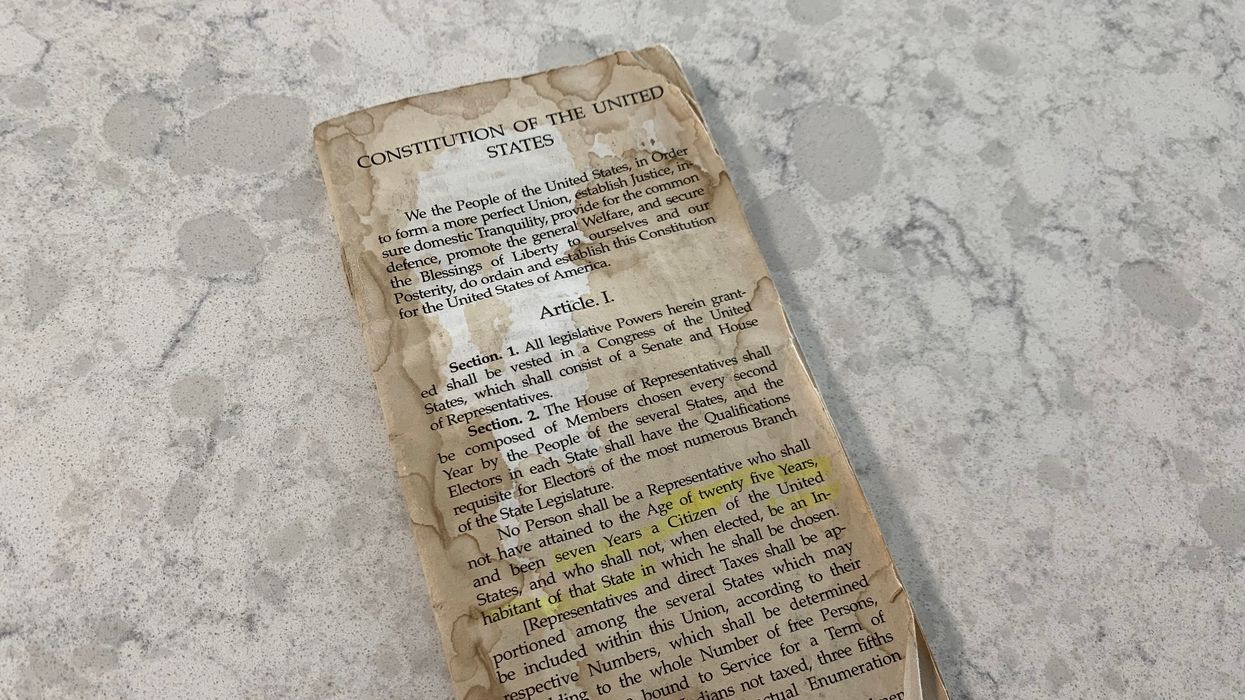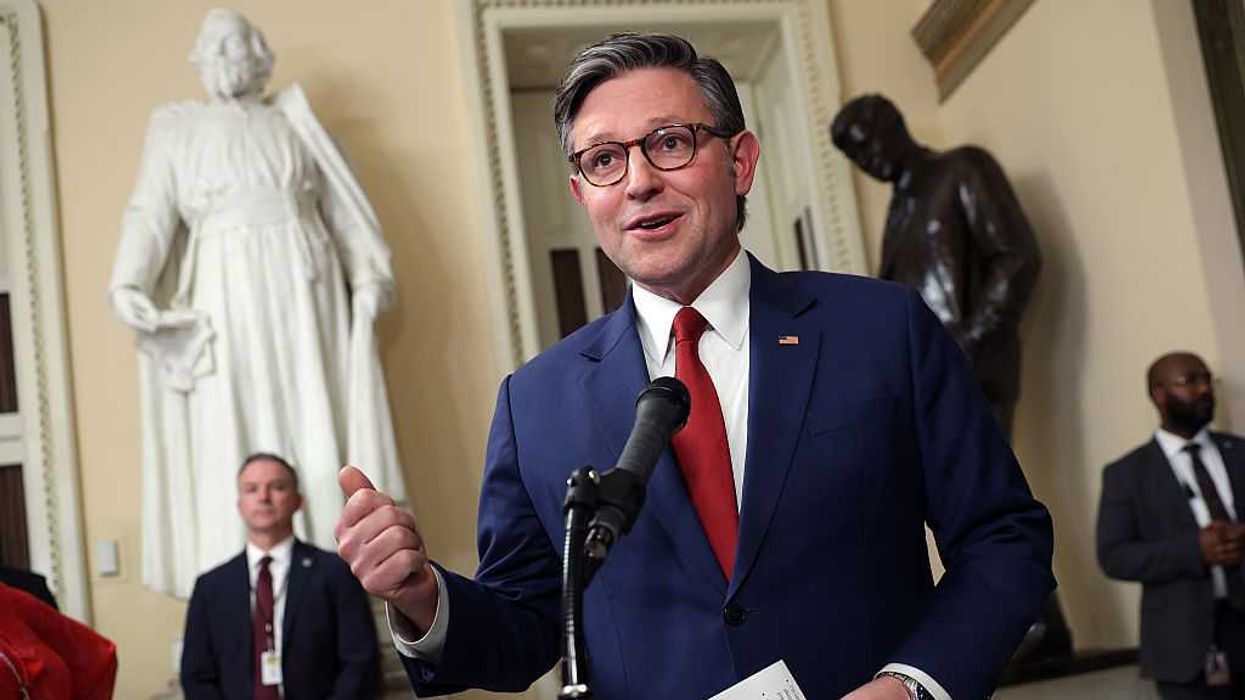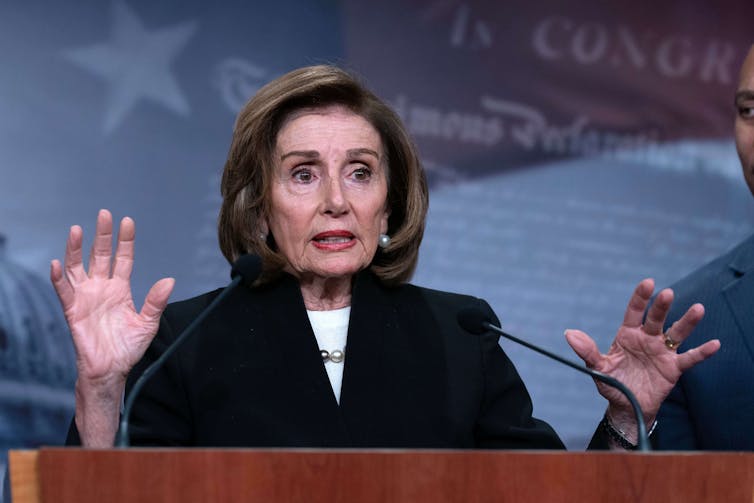Breslin is the Joseph C. Palamountain Jr. Chair of Political Science at Skidmore College and author of “A Constitution for the Living: Imagining How Five Generations of Americans Would Rewrite the Nation’s Fundamental Law.”
This is the latest in “ A Republic, if we can keep it,” a series to assist American citizens on the bumpy road ahead this election year. By highlighting components, principles and stories of the Constitution, Breslin hopes to remind us that the American political experiment remains, in the words of Alexander Hamilton, the “most interesting in the world.”
As we approach what for many is the most important American election since 1860, let’s take a moment to reflect on a few constitutional characteristics. These principles are offered in the hope that they sharpen our focus about what’s at stake on Nov. 5.
The Constitution was drafted to swaddle America’s periphery. What I mean by that is the Constitution and its amendments were written in good part to protect those who don’t identify with the mainstream and/or choose not to follow convention. The Constitution’s First Amendment, for example, safeguards the free expression of flag burner Gregory Lee Johnson and youthful cross burner, R.A.V. Its Fourth Amendment shields gambler Dolly Mapp and pot smoker Danny Lee Kyllo from warrantless searches. Its Eighth Amendment secures gender affirming medical care for Kaunatica Zayre-Brown. Its Fourteenth Amendment acknowledges — dignifies, really — the same sex marriage of James Obergefell and John Arthur. And that same Fourteenth Amendment? Well, it too shelters little Linda Brown and an entire race of children who just want to be educated in one of our nation’s integrated schools.
The Constitution is purposefully vague, and throughout history that has served us well. In describing the Constitution’s imprecision, Chief Justice John Marshall said it best: “only [the Constitution’s] great outlines should be marked, its important objects designated, and the minor ingredients which compose those objects be deduced from the nature of the objects themselves.” In other words, the Constitution should not (and cannot) anticipate every possible scenario, situation, issue and crisis. Why is this crucial? Because the text’s vague quality allows government to pivot when needed, to respond creatively and thoughtfully to problems, and to adapt to changing times and changing circumstances.
At roughly 4,500 words, the Constitution is brief. Very brief. Article II, covering executive authority, is particularly concise. It differs dramatically from Article I in that it doesn’t include an enumerated list of formal powers. Sure, Article II “vests power in a President of the United States” and grants that president authority to make treaties, appoint ambassadors, execute the laws and command the armed forces. But the fine details are missing. Nowhere in Article II is the equivalent to Article I’s granting Congress the power to lay and collect taxes, regulate commerce among the several states, “establish post offices and post roads” and so on. The brevity of Article II makes a difference looking forward. The guardrails that more or less confine congressional action are not present in the executive branch section. In the past, presidents have mostly followed George Washington’s example and preached modest restraint. But we’re now in a new political reality where presidential self-control is not guaranteed.
James Madison understood all of this. So did Abraham Lincoln. Even Ronald Reagan recognized that America’s fundamental law is the country’s mission statement — our plan for forming “a more perfect Union” — and a powerful screen against the potential abuse of a mainstream populace sitting comfortably in the seats of power. Indeed, nothing limits the dominance of the majority more than the “parchment barrier” of our constitutional charter. It was written and ratified precisely to do so.
Today, Democrats and Republicans have either forgotten or ignored these constitutional characteristics. Take the Democratic Party. Its coalition of blue-collar workers, people of color, Catholics and Jews, disproportionally younger and older Americans, immigrants, and the highly educated is cracking. It is cracking because the party elites have taken the coalition for granted and have dismissed the interests of so many. It should come as no surprise that Hispanic and Black people have been leaving the Democratic Party as of late. The party’s promise to listen to, and swaddle, those without a bullhorn is suspect at best.
The Republicans are no better. There is a clear split between the MAGA GOP and the Reagan Republicans, the new guard and the old. MAGA Republicans feel empowered right now. And yet their brand of Republicanism bears no resemblance to the Republican Party that Lincoln founded. Project 2025 represents the MAGA slice of the party and it envisions an America where the progress made on civil rights, freedom for all and equal justice is a misstep. Heritage Foundation President Kevin Roberts, whose organization led Project 2025, takes direct aim at the left’s “woke culture warriors” and in the process throws shade on those individuals who don’t subscribe to his image of Christian nationalism. These more strident right-wingers don’t even recognize their own hypocrisy. They claim leftist elites “resent Americans’ audacity in insisting that we don’t need them to tell us how to live.” And then they proceed to tell Americans exactly how to live. As a white, Christian, heterosexual male? Sure. As a nonbinary, queer, Black, non-believer? Not so much.
Under a constitutional system where those on the periphery are supposed to be shielded from the majority’s tendency to disregard and mistreat, neither party is excelling. Under a constitutional system where the text is purposefully vague, both parties have to remain vigilant to the potential for abuse. Under a constitutional system where Article II allows the president wide discretion, all political parties have a responsibility to discipline their candidates and their elected officials.
There is not one Constitution for liberals and a separate one for conservatives. Constitutions serve the downtrodden as much as they do the fortunate, the relegated as much as the relevant. Party leaders would be wise to put down their verbal bayonets and think seriously about a common path forward.





















